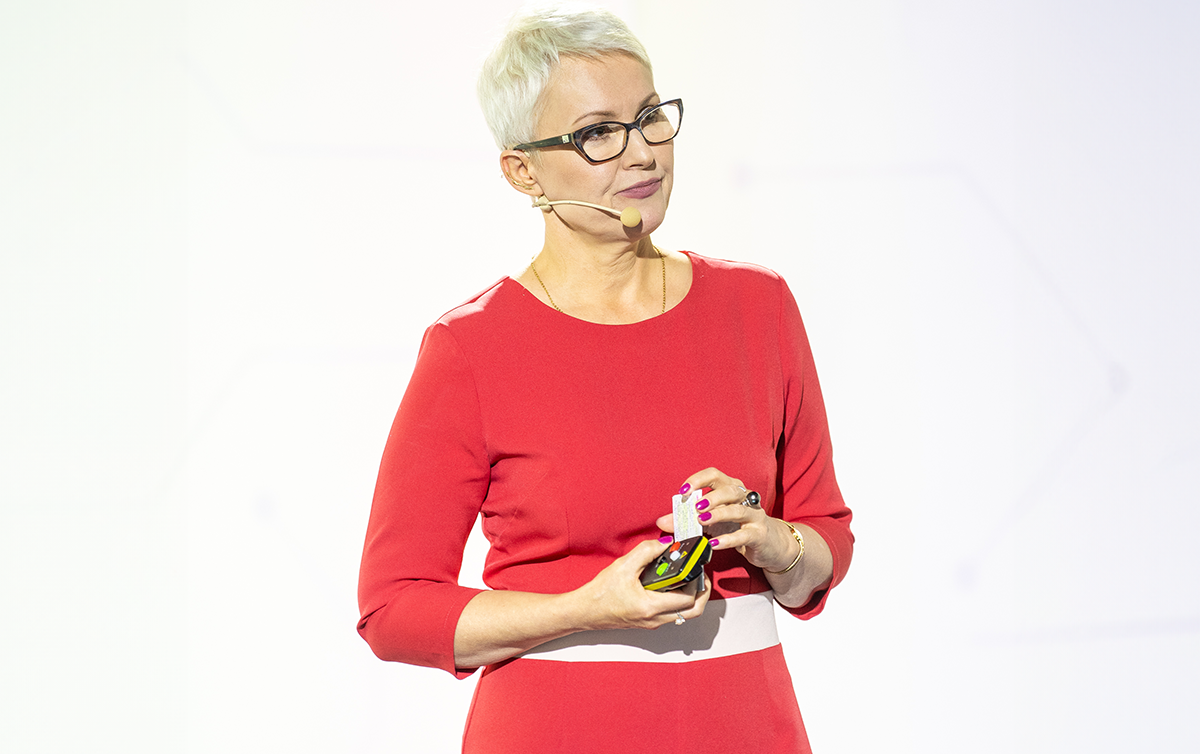Reduced engagement, burnout, quiet quitting – the challenges that companies faced right after the pandemic still remain. Well-being, broadly defined, may be the key.
The downsides associated with the recent pandemic are plain to see: problems with managing distributed teams, lack of integration among employees, and increased stress that has resulted in burnout and quiet quitting. However, it is thanks to the numerous lockdowns and management in times of permanent crisis that employers have begun to look closely at the issue of employee well-being. And rightly so. It has a huge impact on effective work.
However, while on the surface this looks really simple, it is important to remember that well-being is a broad and extremely complex issue. It is influenced by factors such as mental health, physical activity, financial security and recognition. All this affects commitment and efficiency at work. It is therefore worth taking a closer look at these issues.
Let’s start by analysing the scale of the problem and identifying the real needs of today’s workforce in the area of health and well-being.
Psychologist needed now
In 2021, the pharmaceutical company STADA conducted an in-depth survey to evaluate the well-being of European employees. Unfortunately, the findings turned out not to be very optimistic for Polish employers. As many as 70 percent of the survey’s Polish respondents stated that they had felt symptoms of burnout at least once in the recent past [1]. Meanwhile, mental and behavioural disorders have grown to be one of the leading causes of employee absenteeism, accounting for as many as 25.2 million days of sickness absence in 2021 [2].
Health to be improved
There’s not much to be proud of in the area of physical fitness, either. The MultiSport Index Report (2022) shows that the majority of Poles (close to 60 percent) fail to comply with WHO’s recommended minimum activity levels [3]. It is also time to go on a diet. The National Health Fund (NFZ) is sounding the alarm about weight gain: as many as three in five adult Poles are overweight and one in four is obese. The problem has been steadily getting worse over the past few years [4]. It could be assumed that issues related to exercise, health or diet belong exclusively to the private sphere and it is not in the employer’s interest to interfere in this area. However, such an approach is extremely short-sighted. Sport considerably supports concentration and increased self-esteem, and has a real impact on the brain and its cognitive functions [5]. Consequently, sport is an ideal way to amp up performance at work: not only in physical but also mental terms. And this definitely touches on areas that employers should pay particular attention to when building committed teams.
Development and finance – a daily necessity
It is impossible to talk about well-being without issues related to financial motivation, as well as providing employees with development at a satisfactory level. Randstad’s Workmonitor survey, conducted in 2022, shows that we change jobs just as often for the money as for the opportunity to grow (44 percent of answers for each) [6]. So if we want to make a real difference to employee engagement, loyalty and well-being – it is worth taking care of these factors, too.
Employers to the rescue
However, this raises the question of how support in the area of, for example, mental health or diet might be received? The conclusions are definitely optimistic. Employees do expect meaningful support and commitment from their employers. According to the MultiSport Index (2022) report, as many as 25 percent of them believe that employers have a role to play in improving their employees’ engagement in physical activity [3]. To complete the picture, a survey conducted by Employers of Poland shows that the overwhelming majority (90 percent of respondents) see it necessary for employers to implement programmes supporting the mental health of their employees [7].
What do companies say to this? Fortunately, they too recognise the direct impact of well-being on business metrics, and therefore want to make a real commitment to improving employee welfare. The said survey revealed that as many as 83 percent of employer respondents thought it was a good idea for companies to offer consultations with professionals, such as therapists, to the staff. In addition, 86.5 percent of the surveyed employers believe that companies should offer their staff useful tips on dealing with stress [7].
Where to begin?
Today the key to an effective well-being strategy, one that is ahead of the curve and has a real impact on commitment, is personalisation. The employer should therefore base its activities in this area on a mix of tools to help employees achieve their individual goals. This will give them a sense of agency and decision-making, which in itself increases commitment.
73 percent of employees expect benefits that are tailored to their needs and capabilities
“Tired, Indifferent and Uncommitted”. A report by Benefit Systems, 2022
How to get such private information? Benefit Systems comes to the rescue by offering a service called “well-being concierge”. An expert will measure the level of well-being in your team, tailor the solutions and provide support at every stage of developing and implementing an effective well-being strategy.
It is always worth identifying people’s individual needs at the start and then providing them with personalised solutions – a full range of services, consultations, webinars and courses tailored to the goal. The next step is to use the services of experts to provide quality support. And finally – constant observation of the effects is necessary. This is where Benefit Systems’ second proprietary tool, the “well-being score”, comes in handy. It makes well-being a measurable indicator in the hands of employers.
Tools for the employer
So we already know how to approach the issue and what next steps to take – from strategy to measuring results. But what tools do we have at our disposal? It turns out that the modern employer has many options in this respect. And that goes for every aspect of well-being.
Area 1. Physical health
Here, the employer can reach for, among other things, the MultiSport card. In addition to access to thousands of facilities, it also provides an educational loyalty programme called “Design Your Shape” as well as an engaging Summer Game for tens of thousands of users.
The online services available as part of the MultiLife benefit will also provide valuable support. They include Telemedi – enabling quick contact with a doctor, or preventive health check-ups through Diagnostyka facilities. The same product also provides expert advice, including from a dietician and a personal trainer. Importantly, here the employee can set individual health goals and select solutions that fit perfectly with them.
Area 2. Mental health
As in the case of physical health, employers today can easily provide their teams with expert support (the availability of an online psychologist is possible for MultiLife users, among others). It is also worth betting on training in this area (e.g. a mindfulness course) and well-being apps for stress reduction, such as Focusly.
Well-being is also influenced by pursuing one’s passions. This is where the MyBenefit Cafeteria comes to the rescue. The points collected there can be used, among others, for dream trips, books or sports equipment and other accessories.
Area 3. Development in the area of well-being
Employees need knowledge. They openly say that they’d appreciate having access to training sessions, webinars or well-being workshops. In addition, they’d be happy if their superiors had access to such training opportunities as well [7]. However, time may be a problem. In fact, lack of time is the second most commonly cited factor – after stress – contributing to a deterioration in the mental health of the Polish population. Consequently, it’s a good idea to take advantage of online platforms, such as MultiLife, where employees receive valuable knowledge provided in a convenient way (including through books and audiobooks from Legimi, or language courses from ESKK and business courses from Youniversity).
Area 4. Finance and recognition
Financial welfare is one of the most important elements affecting commitment and loyalty. The same goes for recognition – no longer just in the form of bonuses, but also recognition of effort or loyalty. It is worth choosing appropriate benefits in this area, too. Benefit Systems products are a perfect example of this. Employers gain the ability to provide ongoing support to the household budget and reward employees with points in the cafeteria. By giving employees the freedom to choose exactly what they need in the form of benefits, you will ensure their financial well-being. Managers, on the other hand, get the tools through MyBenefit to instantly and individually recognise commitment, but also to grant rewards for special occasions – birthdays, anniversaries or company holidays.
How about outsourcing?
Opportunities to build commitment through well-being are therefore plentiful. This has its upsides (such as employers having the necessary tools virtually at their fingertips), but also its downsides (the vastness and variety of these tools means that selecting the right ones and matching them to the needs of teams can be problematic).
The market suggests a solution in this case, too. Thewell-being score service mentioned above is already available. It provides a simple way to measure the level of well-being in the company and to know which areas need support first. Benefit Systems can thus support you not only in creating, but also in implementing an appropriate well-being strategy based on properly selected services and programmes.
So, as you can see, there is a readiness to act on all sides – employees openly declare the need for support, employers are ready to provide it, and the market provides them with the tools to do so. So there is nothing left to do but act. And observe how action translates into increased commitment.
References:
https://www.stada.com/media/7197/health-report-2022_final.pdf
https://www.zus.pl/documents/10182/39590/Absencja+chorobowa_raport_2021.pdf/8ca8025c-f6dc-b02c-a7e4-5aa99d28af9a?t=1652869131280
https://biuroprasowe.benefitsystems.pl/186355-badanie-multisport-index-2022-aktywnosc-fizyczna-polakow-po-dwoch-latach-pandemii
https://www.nfz.gov.pl/aktualnosci/aktualnosci-centrali/otylosc-choroba-wagi-ciezkiej,7355.html
https://ncez.pzh.gov.pl/aktywnosc-fizyczna/systematyczny-ruch-lekiem-na-stres/
https://info.randstad.pl/45373/i/monitor-rynku-pracy-46
https://pracodawcyrp.pl/upload/files/2021/05/raport-zdrowie-psychiczne-w-srodowisku-pracy-25-05-2021.pdf





















